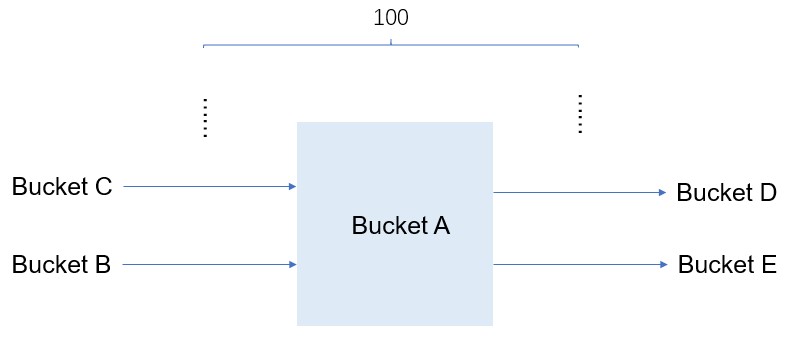Same-region replication (SRR) replicates objects across buckets within the same region in an automatic and asynchronous (near real-time) manner. Operations, such as the creation, overwriting, and deletion of objects, can be replicated from a source bucket to a destination bucket.
Scenarios
If you cannot transfer data from a country or region due to compliance requirements of local laws and regulations, you can configure SRR rules to transfer and store replicas of the data in a source bucket to multiple destination buckets that are located in the same region as the source bucket. Objects in destination buckets are exact replicas of objects in the source bucket. The objects have the same object names, versioning information, object content, and object metadata, such as the creation time, owner, user metadata, and access control lists (ACLs).
Features
SRR supports the following features:
Data replication between buckets in the same region
You can configure SRR rules to replicate data from a source bucket to multiple destination buckets that are located in the same region as the source bucket. By default, you can configure up to 100 SRR rules for a bucket. A bucket can be specified as a source bucket in an SRR rule and a destination bucket in another SRR rule at the same time.

If you want to configure more than 100 SRR rules for a bucket, contact technical support.
Near real-time data replication
You can configure CRR rules to replicate operations, such as the creation, deletion, and modification of objects, from a source bucket to a destination bucket in near real time.
Data consistency
By default, OSS ensures eventual data consistency between the source and destination buckets. However, if you upload an object that has the same name as the source object to the destination bucket, OSS cannot ensure the eventual data consistency between the source and destination buckets.
Historical data migration
You can replicate the data that is added after a CRR rule is configured for the source and destination buckets. You can also replicate historical data from the source bucket to the destination bucket.
Replication progress query
You can view the most recent replication time of the replicated data and the progress of the replication for historical data migration in percentage.
Versioning
CRR ensures eventual data consistency between the source and destination buckets for which versioning is enabled. If you configure a CRR rule to replicate only the added and modified data, deletion operations performed on the specified version of an object in the source bucket are not replicated to the destination bucket. However, the delete markers created in the source bucket are replicated to the destination bucket.
Replication of encrypted data
SRR allows you to replicate objects that are not encrypted and objects that are encrypted by using SSE-KMS or SSE-OSS on the Object Storage Service (OSS) server.
Event notification and real-time log query
You can use the following methods to receive notifications of changes that are made to objects in source and destination buckets during CRR tasks. The changes include adding, modifying, deleting, and overwriting objects.
Set the event type to the following values in the event notification rule:
ObjectReplication:ObjectCreated,ObjectReplication:ObjectRemoved, andObjectReplication:ObjectModified. For more information, see Use event notifications to monitor object changes in real time.Enable real-time log query in the OSS console to obtain the statistics of operations that are performed on objects. For more information, see Real-time log query.
Usage notes
Billing rules
After SRR is enabled, you are not charged for the traffic that is generated when you use SRR to replicate objects from a source bucket to a destination bucket in OSS.
NoteThe traffic generated when you use SRR does not consume the default bandwidth of OSS.
After SRR is enabled, each time an object is replicated, OSS accumulates the number of requests. However, you are not charged for the requests.
When you use SRR to replicate Archive objects from a source bucket to a destination bucket, no data is restored and you are not charged data retrieval fees.
Replication time
In SRR, data is asynchronously replicated in near real time. The amount of time required to replicate data from the source bucket to the destination bucket ranges from a few minutes to several hours. The replication time varies based on the data size.
Risks of overwriting objects that have the same names
If you configure an SRR rule for two buckets, an object replicated from the source bucket may overwrite an object that has the same name in the destination bucket.
Limits
You can configure SRR rules only between two unversioned buckets or two versioning-enabled buckets.
You cannot change the versioning status of two buckets for which an SRR rule is configured.
You cannot replicate Cold Archive or Deep Cold Archive objects from a source bucket to a destination bucket.
You cannot replicate appendable objects in a source bucket to a destination bucket whose storage class is Cold Archive.